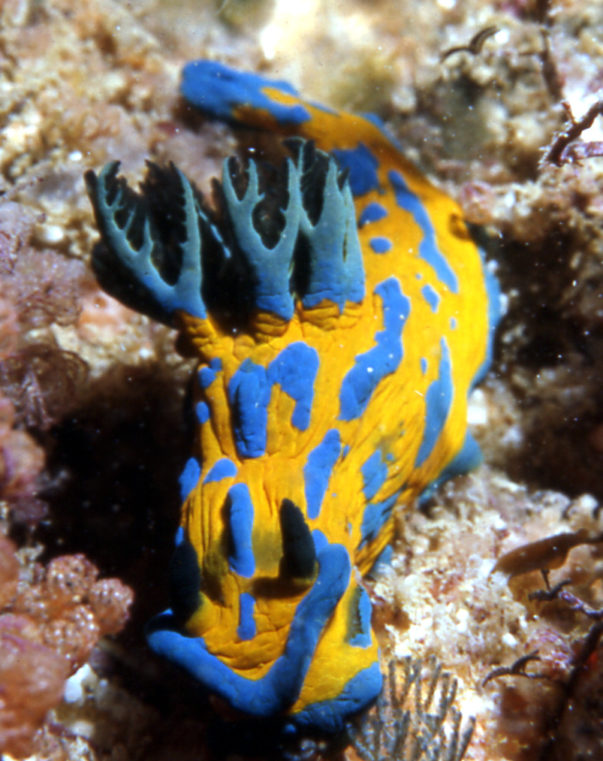Nudibranch is from the Greek for ‘naked gills’; the nudibranchs are also known, prosaically, as sea-slugs. Bet you don’t have slugs like this in your garden – bright, bold hermaphrodites!

These, often stunning, creatures can be seen flaunting themselves on the sea floor or in the reefs where they hang out, from the tropics to Antarctica.
Being flamboyantly-coloured, nudibranchs brazenly stroll their stuff, and alarm their predators by their looks. Bright colours tend to warn predators that this delicacy, if not poisonous, is at least extremely un-tasty.

Nudibranchs are amazing creatures. They are simultaneous hermaphrodites (each nudibranch is both female and male) and cannot self-fertilise. Two nudibranchs will exchange sperm sacs via a tube behind their heads. Depending on the species, this may take seconds, or hours.

The fertilised eggs are laid in egg-masses, and the adult nudibranch has no further part in their development. So there.
The larva of nudibranchs swim freely until they find somewhere they can settle, feed and develop into adults.These adults, without shells, rely on their bright, gaudy colours to deter predators.
They are marine snails without a shell (as an adult), and some can grow up to 40cm. Most species are less than 10cms in length.
Their gills are either along their back, or covered by a flap along one side. Some of them have evolved to wave their gills on their backs (retreating into special pockets when alarmed). Don’t we all?
Help protect these marine marvels by supporting DRI and our research and education programs.
 Join our ‘i sea,i care‘ Communities; easy, quick and so worthwhile!
Join our ‘i sea,i care‘ Communities; easy, quick and so worthwhile!






